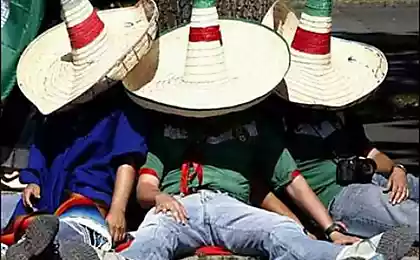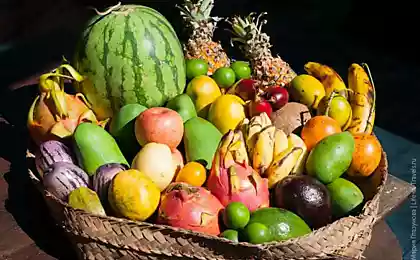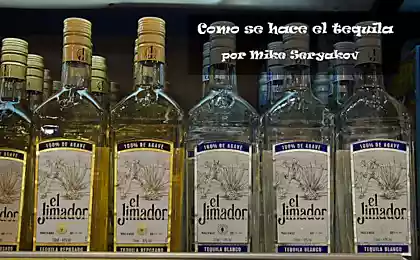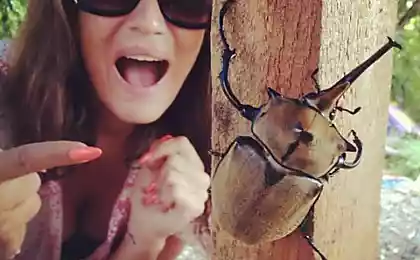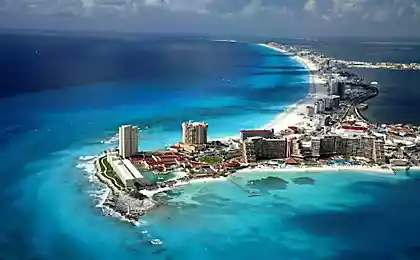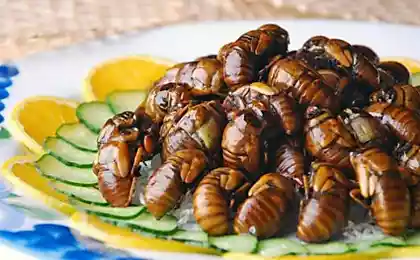1543
Interesting facts about Mexico

The official name of Mexico - Estados Únidos Mexicanos - United Mexican States.
Mexican tamales (corn flour tortilla stuffed) called zacahuil has a length of three meters and weighs about 150 pounds.
Mexico gave the world chocolate, corn and chilies.
Mexico - the birthplace of a very rare Volcano rabbit (or "volcanic rabbit"), who lives near the Mexican volcanoes.
Major North American wild cat, jaguar, can be found in the southern Mexican jungle.
The first printing press in North America has been used in Mexico City, capital of Mexico, in 1539.
Millions of butterflies Monarch butterfly fly each year to Mexico from the United States and Canada, although a release sharply reduced because of deforestation.
The border between Mexico and the United States is the second-longest border in the world (as long as it is only the boundary between the United States and Canada).
By the number of citizens of Catholic Mexico is second only to Brazil.
Home to red poinsettia (Aztecs called it kvetlahochitl (cuetlaxochitl)) is Mexico, and it was named in honor of Joel Roberts poinsettia, the first US ambassador to Mexico (1820e years).
Mexican children do not receive gifts for Christmas. They bestow the 6th of January, the day when Mexicans celebrate Epiphany (Three Kings arrival).
Mexico is located in the "Ring of Fire", one of the most dangerous volcanic and seismic zones.
Mexico City is built on the ruins of the great Aztec city called Tenochtitlan. Since Mexico City is built on the lake, he dives into the water at the level of 6-8 inches per year as the pump is pumping water for the growing population.
Mexico flag consists of three vertical strips. The left green stripe represents hope, the average white represents the purity and the red stripe represents the blood of the Mexican people. Eagle, clutching a snake comes from the Aztec legend.
Chihuahua - the smallest dog in the world, it is named after the Mexican state of Chihuahua.
Plaza Mexico is 756,066 square miles, which is about three times the size of Texas.
Only ten countries in the world have a larger population than in Mexico, which is home to 109,955,400 people.
Mexico City - the oldest city in North America, as is the city with the highest elevation. In addition, Mexico is one of the largest cities in the world.
Mexico ranks 14th in the world among countries with the largest area.
Modern Mexicans - is a unique blend of representatives of many ancient civilizations, including the Olmec, Zapotec, Toltec, Mayan, Aztec, Inca, Africans, French and Spanish.
The first great civilization in Mexico was the Olmec civilization (1400-300 years BC), whose members have built a number of cities along the east coast of Mexico and the famous colossal heads carved. They worshiped the mysterious nameless god, half-man, half jaguar.
Zapotec civilization (600 BC - 800 BC year) has built huge cities along the southern part of Mexico and developed the first system of writing in America.
Maya tribe existed unusual weapon called "Shershneva bomb", which is actually a hornet's nest, is reset to enemies during battle.
In the fourteenth century in Mexico settled Chichimeca group (warring nomads), who called the Aztecs (or Mexican). Once they saw an eagle (symbol of the sun), sitting on a cactus (heart symbol), grabbed the snake (a symbol of the god Quetzalcoatl, or land) - an image that is now depicted on the flag of Mexico.
Snakes are constantly found in Mexican mythology, from the snake-god Kukulcan, whose pyramid can be found in the ancient city of Chichen Itza, to the feathered snake god Quetzalcoatl.
Aztec human sacrifice adopted from earlier cultures (such as the Olmecs), they believed that without human blood the universe will end and the sun will cease to move. There are many ancient statues of the gods with his tongue hanging out, such as Huitzilopochtli, that could be a sacred gesture meaning bloodlust.
During the ceremony, the Aztec human sacrifice, five priests, sometimes painted in different colors by persons holding the victim's hands and feet. Heart, called "precious eagle cactus fruit» (precious eagle cactus fruit), cut out of a living person and burned in the temple.
Shells and stones on the Aztec ritual symbolized the blades face the gods, which were intended sacrificial heart. The Aztecs sacrificed from 10 000 to 50 000 people a year. During the reign of Montezuma II was sacrificed 12,000 people in one day.
The Aztecs played a ritual ball game known as tlachtli, in which losers are often sacrificed to the gods.
When the Spanish conquistador Hernán Cortés arrived at the Aztec lands in 1519, the Aztecs took him by the god Quetzalcoatl returned and offered him a drink of the gods: a hot chocolate.
The descendants of the Aztecs say on the form of the Aztec language, Nahuatl called. Many of the words of the language, especially those used to designate food passed into European languages, for example, tomatoes (tomatl), chocolate (chokolatl) and avocado (auakatl).
About 60% of the modern Mexican population - mestizo (half Indians and Spaniards), 30% - mainly Indians or Indians, 9% - Caucasians and 1% - other nationalities.


